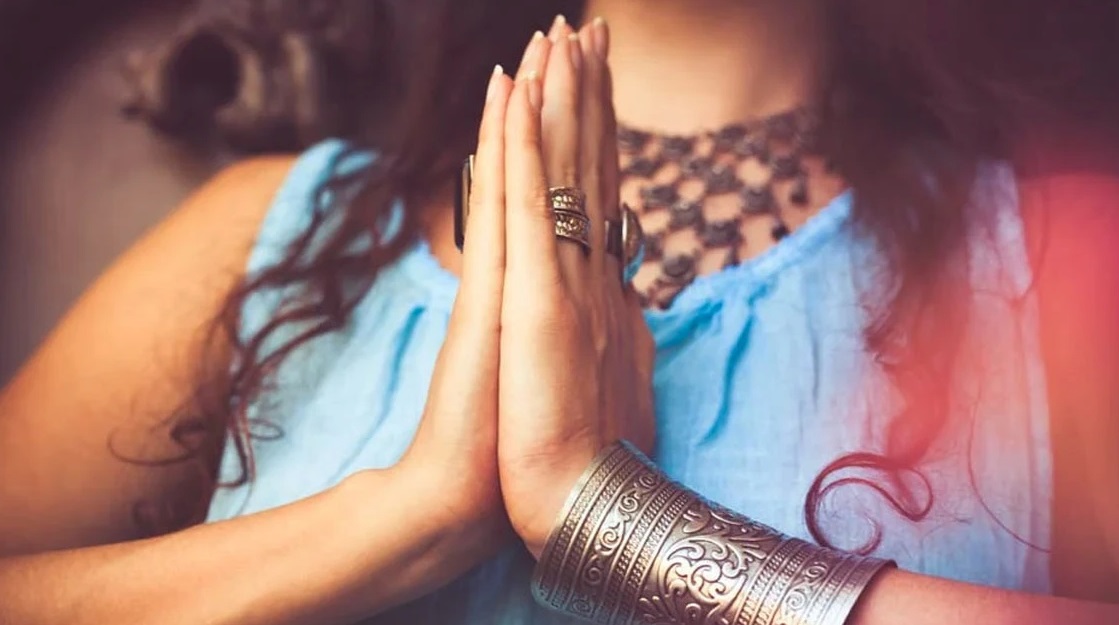
Complete Guide: How to Use Namaste
If you ever went to a yoga class, chances are that you heard the teacher say the word namaste. At first, most people don’t think much of it aside from being a cool way to end a yoga class, but the meaning of this word is a lot deeper than one might think. Actually, the origin of this word goes back several centuries ago and is still used to this day by Hindus and Buddhists. What does namaste mean, and why is it so important? Let’s find out!
The Origin of the Word Namaste
The word namaste first came from the ancient Sanskrit language, which is 5000 years old. This was the official language in India, but in recent times, became a language of ritual and worship. In 1950, Hindi became the new official language in India.
The word namaste is one of the most powerful words in the old and spiritual Sanskrit, and shouldn’t be used lightly. In fact, the latter simply means that you give respect to someone, in such a way that you are bowing before them. If you translate the meaning of namaste in a word-for-word fashion, it literally means ‘bowing to you’, whereas, namah means ‘I bow respectfully to you’, and aste means ‘let there be’.
Moreover, there are a few other meaning variations, such as:
- My soul recognizes yours.
- We are one, we are the same.
- I honor the entire universe that dwells in you.
- I honor the love, light, and peace which is in you.
- We are one when you and I bow to our true nature.
What’s the pronunciation of Namaste?
There is a very common mispronunciation of the word namaste as ‘Nah-mah-stay’ which is the westernized version of the original word. Put simply, this word should normally be pronounced as follows:
Nu – Muh – Steh
That being said, don’t worry if you use one or the other, especially if it’s in a yoga class context, nobody will get mad at you! However, if you want to practice pronouncing namaste properly, just slowly repeat Nu – Muh – Steh, and when you feel comfortable, try to say it a bit faster.
How to Do the Namaste Gesture with your hands?
To do the namaste gesture, put the palms of your hands together and bring them towards your chest. This is to connect your body and your soul together while reaching your heart Chakra. Thereafter, you will need to relax your hands and your mind, as you feel the connection of everything in your center. Finally, once you feel the right time has come, you can gently bow your head forward. As you bow your head, you are ready to say the word namaste, in a compressed and elevated way.
It is recommended to finish the last syllable on a higher tone, which gives a stronger meaning of gratitude and kindness to your greetings or salutation. As an extra note, keep in mind that you can close your eyes during the namaste gesture, or keep them open, whichever makes you feel the most comfortable.
The Use of Namaste in Yoga
The word namaste is commonly used in yoga classes at the end of a yoga session. It is used to have a personal connection between the teacher and the students. Sometimes, the yoga instruction will say namaste at the end, and the students will respond back in unison. That said, not all yoga teachers say the word namaste during their classes.
Some teachers even find that using this word is wrong, as it is a form of cultural appropriation. As a matter of fact, there have been many debates in recent years about this subject, and many people stopped using the word namaste altogether, in respect of its cultural origin.
No matter on which side of the fence you find yourself, it is at least important to recognize the cultural appropriation of this beautiful word. It doesn’t mean that only people in India should be allowed to use it, just that its origin and spiritual meaning matter in the grand scheme of things.
How to use Namaste in my everyday life?
Did you know? You can actually buy namaste jewelry, such as a namaste necklace, or a namaste bracelet. These usually have the word namaste encrypted in a beautiful and elegant way, or, in most cases, have the Sanskrit Symbol. Those will usually be called Om Necklace, Om Bracelet, or Om Earrings. To recognize the Om namaste symbol, you will see something that looks like the number 3, with a wavy symbol on the right side of it.
Furthermore, if want to bring positive vibes into your home, know that writing the word namaste on your walls is an excellent way to do so. You can paint it with colorful tones, and make it a masterpiece with flowers and clouds. Additionally, you could try to paint the Om namaste symbol, but that’s no easy task! We recommend practicing on a sheet before doing it for real on your wall.
Why do people prefer the Namaste gesture over the handshake?
It is well known that in western countries, the handshake is commonly used pretty much everywhere. It can be used for greeting someone, to congratulate someone, or simply to thank someone, whether it be in a business meeting or in a casual get-together.
However, where the namaste gesture is advantageous in certain cases, is that it doesn’t require any physical contact with another person. This advantage is especially important during a worldwide pandemic, since physical contact in public should be limited as much as possible.
All that being said, we have to admit that the handshake has its plus side as well because it gives some deep information about the person you are talking to. A strong and firm handshake, for example, often means that the person is confident, and vice versa.
In Conclusion
On that note, we would like to thank you for reading this complete guide on the word namaste, its meaning, and its origin. The most important thing to remember is that namaste is a meaningful word with a lot of history that should be used to give your best respect to someone.
